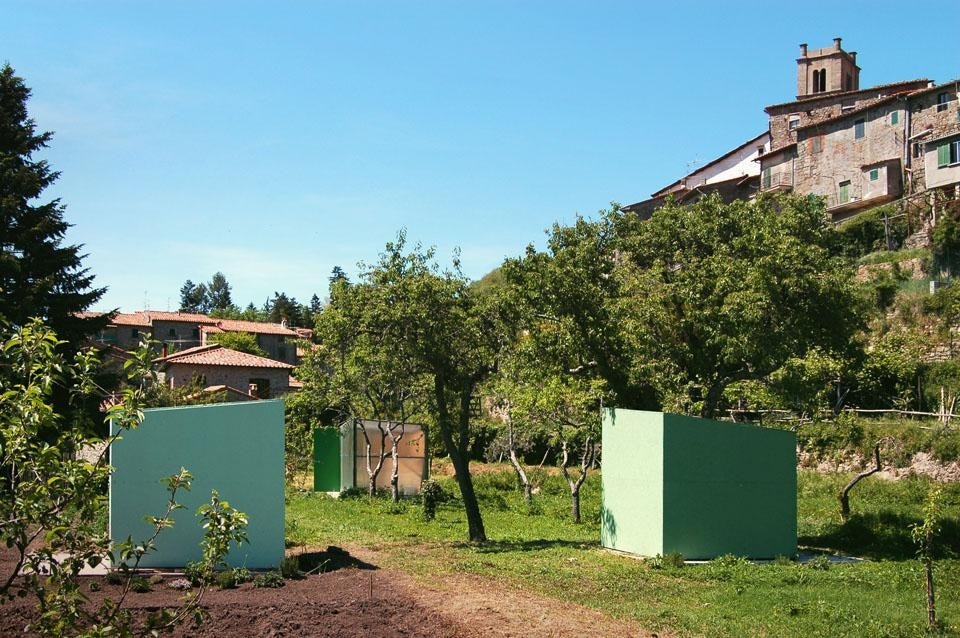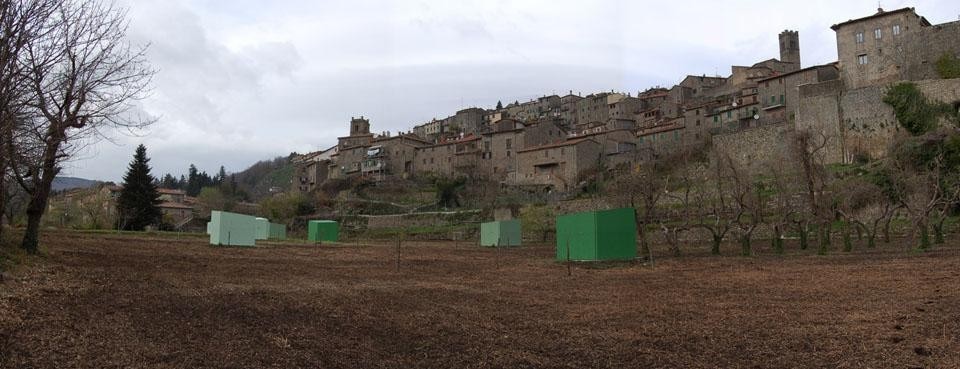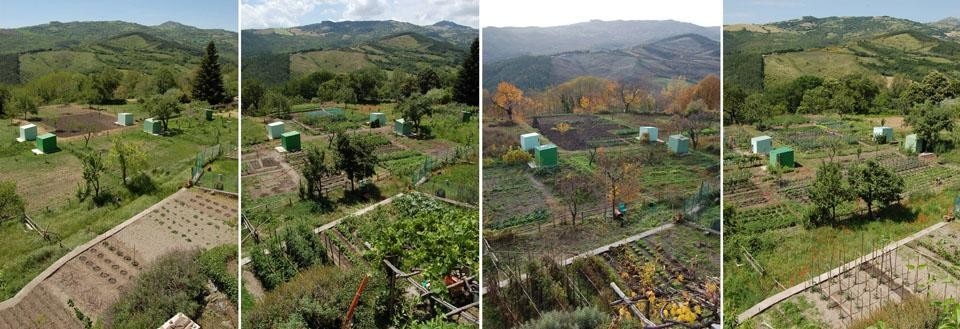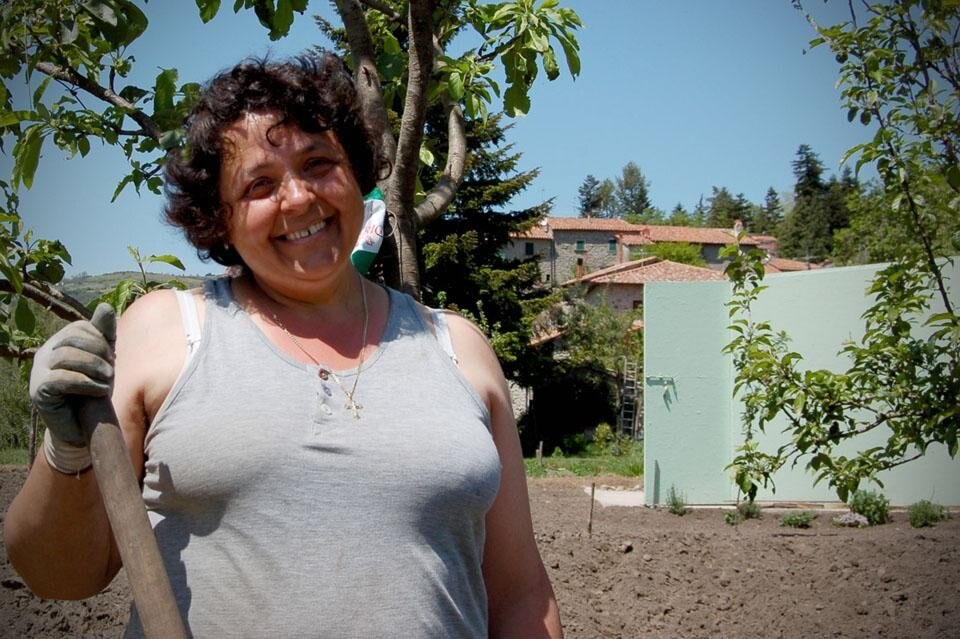As luck would have it, during a site visit for the town's landscape restoration project, the designers (the practice 2TR Architettura) looked upon that very field where an old farmer observed the results of his day's work: he had finished preparing the ground where the next day, like every year at that time, he would be planting onions. Asked about the fate of his garden, the farmer, whose name was Fedro, complained bitterly that his children would not assume the care for it, and that the field would have to be abandoned or converted. Suddenly interested, they endeavoured to include the farm in the larger project for the town's environmental rehabilitation that had already been initiated. Since 2005, with the support of Santa Fiora's mayor and his staff, the project had implemented the recovery of numerous local landmarks that suffered years of neglect and indifference, including three monumental buildings, a mill, a church, monastery gardens, a nineteenth-century aqueduct and a ditch bed of the alluvial basins with its historic hydraulic works and water jacks.

Guidelines for participatory management of the area were proposed to the municipality, inspired by basic themes including protection of biodiversity, promotion of regional agricultural genetic resources, production of quality food on local land and dissemination of organic farming principles. In this way, Fedro's Gardens has become an area for the in situ conservation of the genetic resources of the territory's vegetation with the active involvement of the local community."

Over the course of the twentieth century, the American government has at times supported and financed the creation of community gardens in times of crisis and for the sustenance of society's weaker sectors[1], in Great Britain, Sweden, Germany and Holland, under different names and policies, community gardens are now well-established and important phenomena. They are not only central to localized food supply, but are also functional new forms of urban green space, providing active management by citizens, educational opportunities, and the demonstration of ancient and modern environmentally friendly practices.
From the Tuscan countryside to the dizzying London skyline, these projects set examples of attainable utopia: small-scale, sustainable agricultural production returning to reclaim space and value in the urban landscape, giving it new shape and energy.

From the Tuscan countryside to the dizzying London skyline, these projects set examples of attainable utopia: small-scale, sustainable agricultural production returning to reclaim space and value in the urban landscape, giving it new shape and energy.
[1] The first organized program designed to transform derelict land into community gardens, in response to a crisis, was Potato Patches (1894–1917) developed by the Mayor of Detroit and then repeated in other large cities like Chicago, New York and Philadelphia. World War I brought the Victory Gardens program (1917–1920), which encouraged the creation of patriotic orchards to produce fruits, vegetables and preserves. Between 1930-1939, the Relief Gardens were established as a response to the Great Depression and during the World War II (1941–1945) the Victory Gardens program invited American citizens to cultivate "Food for Freedom." Finally, since the 1970s, the American Community Garden Association has promoted the cultivation and care of shared green areas.




